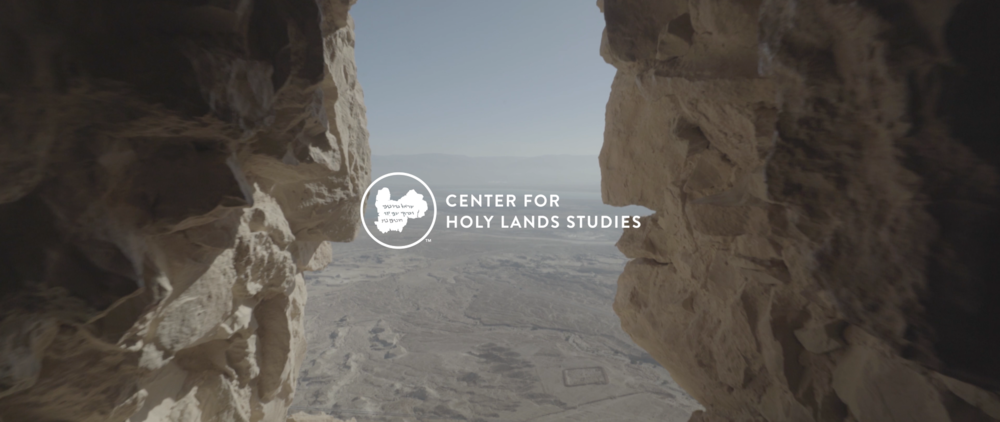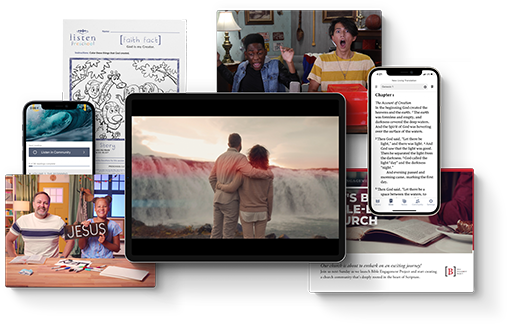Engaging with the Bible on its own Terms
Por | Publicado en Estudiar la Biblia
Bible Engagement Project interviewed Amy Flattery, director for the Center for Holy Lands Studies, on how and why to engage with the lands of the Bible, even during a pandemic.
BEP: What’s the main goal of the Center for Holy Lands Studies?
Amy: Our main goal is the same for the people we bring to the holy lands and for those who can’t go: it’s for them to experience Jesus like they never have before. We aim to have them open up their Bibles and have newfound context for the passages they read: big ideas start to unfold in greater detail, people ask new questions, and they grow more excited about studying the Bible. I do not know a person who has gone over and who has not come back having found God to be more amazing and more personal than they initially thought.
BEP: If someone can’t just pick up and go to the Holy Lands—such as almost everyone right now with travel bans—what can s/he do instead?
Amy: We bring the experience of the Holy Lands to the people who can’t go by creating videos on-site. This way, people can see the Bible come to life, there in its original setting, and gain a deeper understanding of what God is saying to them. We pray that our online content will generate eye-opening moments and a deeper love for God. That’s what historical study is all about.
Another thing you can do if you can’t go there right now is to pick up a map of Bible lands. Look at routes and the distances between places. It’s wonderful to look at the geography and the main crossroads where God spoke to real people in real places to get His message out to the world. He spoke to real people in real places to take humanity from polytheism to belief in the one true God and His Son.
You know, there are many, many theological explanations of Bible passages out there, but there are few historical explanations. When you study history, you can’t as easily put your own interpretation back in the text—which can be a good thing. We need to be asking the question of what the text meant to its first hearers. That way we’ll avoid being unfair to the text and making it say something it never truly did. Understanding the settings in which God spoke brings new life to God’s words for us today.
BEP: What would you say to pastors who have the desire to dig deeper into the Word of God, whether or not they know biblical languages?
Amy: I would first urge someone not to say that you won’t even try to dig deeper just because you don’t have a certain level of training or understanding. There are things that you are capable of doing, and you can grow by doing them.
For starters, get a map out. There are some logical explanations to many things in the Bible. I’m not saying that applies to miracles, but consider routes and regions: why did God have his people take certain paths?
As an example, look at God’s dealing with the Israelites in the Old Testament: They were captives not only politically and economically under the Egyptians but spiritually as they followed the practices of the religions around them. God led them on a specific route in the wilderness, but they kept departing. It’s showing that God was outlining one way to follow Him, with an undivided heart, but His people kept turning away by retaining their just-in-case idols from neighboring nations. It was a journey not only from Egypt to the Promised Land but also from polytheistic practices back to monotheism. And the geography highlights that.
One of the applications of the Israelites’ journey can be, “What are our just-in-case idols today? What do we add to our lives that supplants our trust in God alone?”
BEP: That’s great. Can you share another example of how geography or history can speak to the theological themes of the Bible?
Amy: Sure. As we study, we see that the Bible has a narrative that it follows through the lands where the events take place. The Bible is telling one story from the Old Testament through the New, and I see it as a portrait of, or a progression of, obedience. Think again of the people who had to wander in the desert, waiting for a Messiah. They had to be shepherded and taught by prophets and priests and kings, and they constantly struggled in obedience. Then, finally, Jesus comes. He is the picture of obedience, following God even unto death. Obedience is just one of the many themes woven throughout Scripture, and it’s seen in God’s relationship with the Israelites and then with Jesus: we can trust God, and God trusts people. It’s a two-way street. Obedience to God today may or may not look like following Him through a desert, but it’s wrought through loving Him and loving people.
BEP: Why would it matter to look at anything beyond the biblical text for aid in discovering the Bible’s meaning?
Amy: If you’re truly wanting to understand what was written and what it meant in the time period in which it was written, then understanding the geography, culture, history, and spiritual climate are critical. Think of it this way: if you were going to give a presentation on Abraham Lincoln, or explain him to someone who had no background knowledge of him, you wouldn’t read only what he had written; instead, you would read books about the time period in which he lived and look at photographs of his house and read what other people have said about him to get as accurate and as full a picture as is possible.
I had no idea, even after I graduated from college with a degree in Biblical Studies, that rabbinic literature and literature from any particular biblical time period would shed a light on the text and help me understand what was going on historically. But it most certainly did.
BEP: Any final thoughts?
Amy: Yes! Please know that it’s okay to wrestle with the text. Actually, it’s more than okay to wrestle and ask questions. This process is really quite Jewish in nature, and when we approach it with an inquisitive nature, we see that there’s much we have to learn. As we do, it’s iron sharpening iron. Think about how Jesus schooled the teachers around Him to the point where they often had nothing to say back to Him: the point of studying, and the point of CHLS, is learning. Biblically speaking, and speaking from a place of faith, do not be discouraged as you learn.
I’d also encourage them to understand that we are never going to know everything there is about a text, so it’s always acceptable to go back and keep studying and re-studying. This is not daunting so much as it is exciting—this is an invitation to a lifetime of digging deep. You won’t accomplish this in a day, a week, a year…only in a lifetime of studying Scripture.
Finally, I would add that it’s best to write your theology in pencil: you’re probably going to erase and adjust it many times as you seek answers from the text.
BEP: What has research on and time spent in the holy lands done for you personally? These have given me a deeper understanding of the text. I realize that many times, we can easily and unknowingly put our own traditions and interpretations on what we read. We’ve heard a passage preached and taught one way for so long, that we just accept what we’ve heard, and we may be shocked when we go and read a biblical story ourselves and begin asking questions of the text’s surrounding context.
Studying this way has made me less selfish. Studying rabbinic literature with my professor in Israel showed me so much more about the life of Jesus—who He was and what He did, and His life of faith was clearer to me than it had ever been. Each time I go, I learn more.
In these contexts, God becomes more brilliant than you could ever imagine.
* * *
A note from CHLS: we exist to resource not only pastors but people in the pew—whether they have traveled to the Holy Lands with us or not. We are here to serve all! Learn more at www.holylandsstudies.org.



